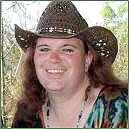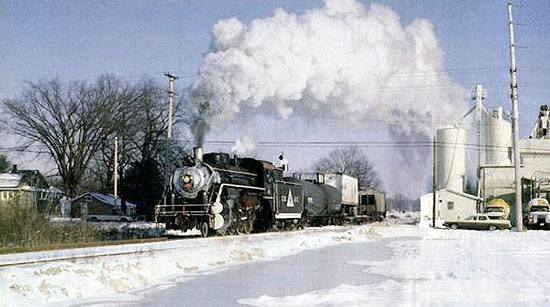 Distant Whistle by Mary Rae McPherson
Distant Whistle by Mary Rae McPherson
A reprint from her blog site: http://alongtherails.wordpress.com
We woke up to snow on the ground on the morning of Saturday, January 5, 1985. While the snow was nice to see, it did seem to be something of a waste; after all, school was out on Saturday regardless. Why couldn’t have come down earlier and given us an extended weekend?
I was 12 years old that winter, still plenty young enough to be able to appreciate the opportunity to sled down the hill out behind our house east of Carbondale, Illinois. That would have to wait for later in the day, however. First up was a rare late morning basketball game at the SIU arena with my father and grandmother. The Salukis lost to Tulsa in a close game, 98-96. The loss wasn’t all that unexpected; we lost half our games that year.
It was mid afternoon before I got out in the back yard for a go on the hill. My grandmother stayed on the back porch and watched as I got my red toboggan out. I had gone down the hill several times when I could have sworn I heard the sound of a steam whistle. I stopped and listened more closely. For a few moments there was nothing but the sounds of traffic on nearby Illinois highway 13.
After a few moments I went down the hill again and was trudging back up the hill when I heard it again. It wasn’t my imagination. It was the deep moan of a three chime steamboat whistle off in the distance.
“Did you hear that?” I asked my grandmother.
“Yes,” she said.
I was surprised; not that there was the whistle of a steam locomotive to hear, but rather the fact that I COULD hear it. I knew that the nearby Crab Orchard & Egyptian Railroad was the last steam powered shortline in the United States. I had known about it for a few years. I had even seen the engine running up close on a couple of occasions. But to actually HEAR it? They almost never ran on Saturdays, and the prevailing winds almost always carried sounds from the west. The CO&E was east of us.

I stood there quietly, listening as the sound of that whistle came rolling in through the woods from the east. I would have loved to have been standing along the track somewhere, watching as the railroad’s #17 came by with a short train heading for the west end of the line. That wasn’t going to happen, as it was too far away for me to get to on my own. But to be standing in the back yard and listening to that melodious whistle was the next best thing.
It turned out to be the only time I ever heard that whistle from my house. The railroad often ran before I was home from school, and sound didn’t usually carry that way anyway. More often I would hear the distant air horns coming from the Illinois Central Gulf trains in Carbondale a few miles to the west. I would see #17 one more time, toward the end of June when I was invited to ride the cab of the engine from the west end to downtown Marion on a freight train. Then in September of ‘86, the engine suffered a serious failure of the piping inside the boiler and never ran again. I never forgot those days, when I lived so close to the last steam powered railroad in America.
In early December, 1987, my copy of the latest issue of Trains Magazine arrived in the mail. I brought it to the house with the rest of the mail, and went to my room to look through its pages. Imagine my surprise when I turned to the photo spread on pages 46 and 47, only to see a photo of Crab Orchard & Egyptian #17 passing Odum Concrete in Marion. The caption began as follows: Southern Illinois doesn’t get all that much snow, and the 8-mile Crab Orchard & Egyptian rarely strayed from its Monday-Wednesday-Friday schedule, so 2-8-0 17 heading west from Marion after a 4-inch snowfall on Saturday, January 5, 1985, was a double treat for the photographer.
Immediately I thought back to that afternoon, standing in the back yard with my grandmother and listening to the distant sound of #17’s whistle. It was wonderful to see a photo taken that day, a photo that rekindled that memory and changed it into something I would remember the rest of my life.
-thanks to Mary Rae McPherson for her permission to reprint this story.
